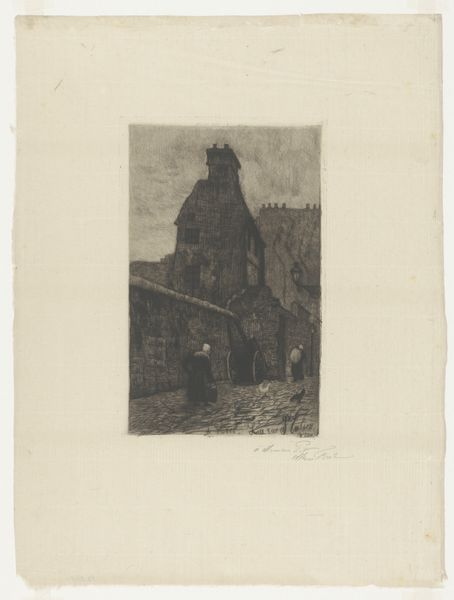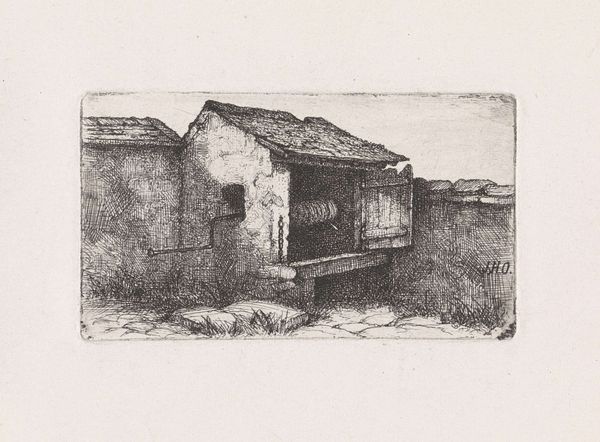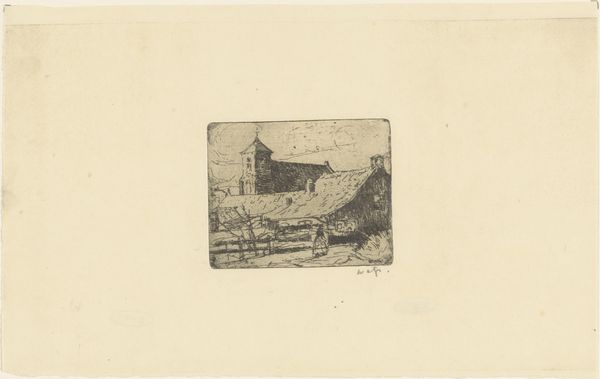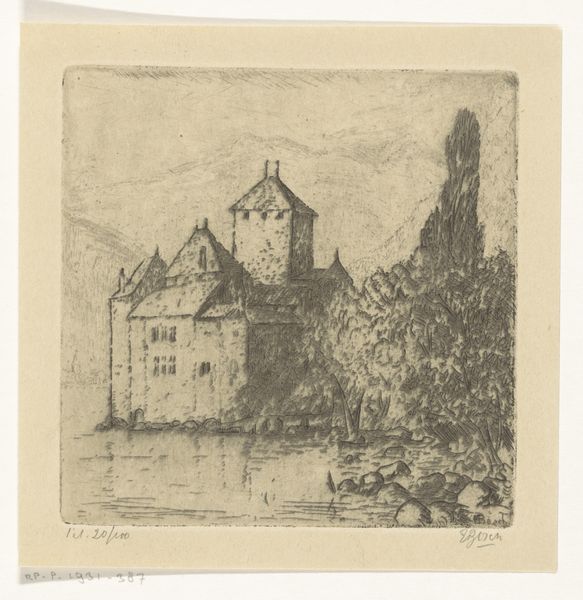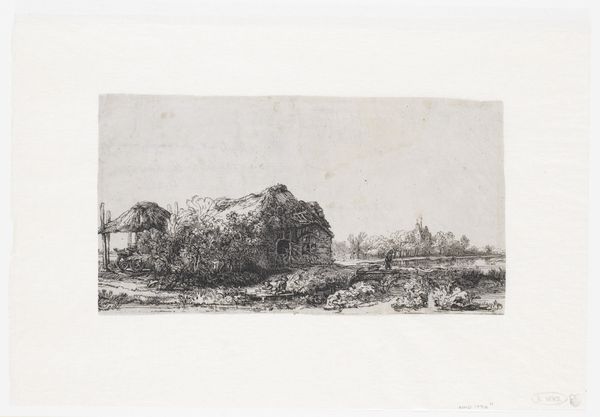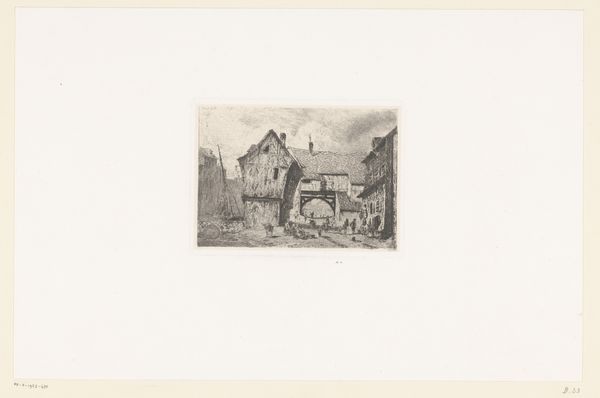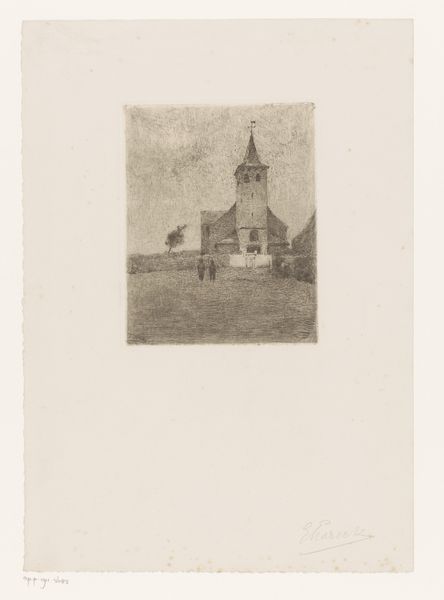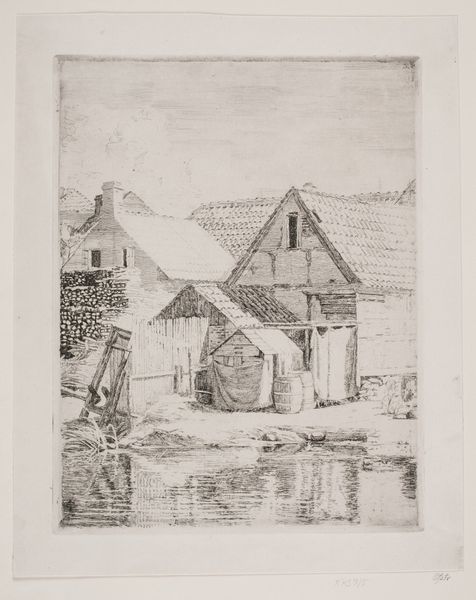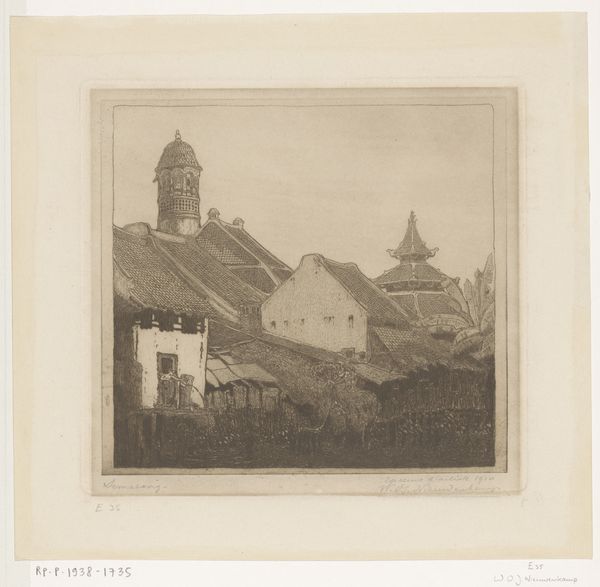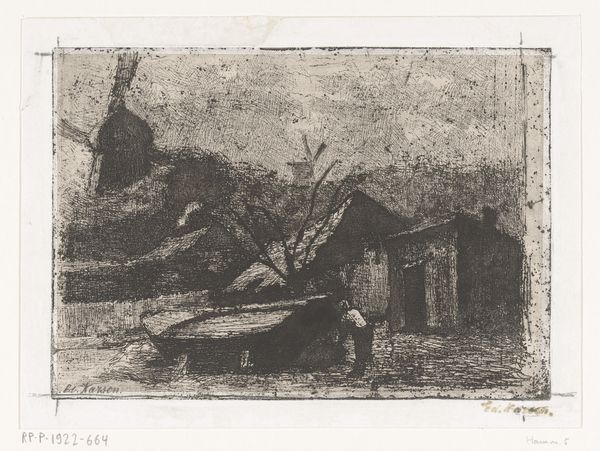
Dimensions height 189 mm, width 184 mm
Curator: Looking at Pieter Dupont's etching, "Boerderij met hooischuur," or "Farm with Hayrick," from 1895, what immediately strikes you? Editor: The looming structure of the hayrick is quite impactful. The dense, almost chaotic lines create a tangible sense of texture and form, dominating the landscape and the other outbuildings. Curator: Dupont was quite interested in rendering rural scenes and daily life with remarkable detail and attention, which speaks to the rising agricultural production in late 19th century Europe. The labor to build something this monumental—how does that inform your interpretation? Editor: It’s precisely the way that dense, chaotic, and rhythmic linework captures the monumentality you mention that I find captivating. The overall composition gives the impression of simplicity but it also suggests something much deeper, almost melancholic in its plainness and ordinariness. Curator: Dupont's choice of etching—a painstaking process involving acid, metal plates, and printing—is no coincidence. It speaks to the democratization of art, allowing for wider distribution of these images and a commentary on everyday realities. Editor: Agreed, and there is an inherent tension at play between subject matter and artistic technique, a negotiation between representation and interpretation, that really elevates the image. Dupont takes a rural scene and turns it into art through formal construction. Curator: It's about giving visibility and acknowledging labor. It makes the ordinary worthy of careful consideration through the reproduction of art. What can you infer about this "everydayness?" Editor: Its simple presentation emphasizes geometry: conical hayrick juxtaposed with the farmhouse; fields contrasted by sky; textural tension realized through variations in mark making. Curator: I appreciate the attention you brought to the formal, and the simple realities—that the etching gives attention to not just rural work but the materials and processes behind producing art and sustenance during a particular historical and social climate. Editor: In its simplicity, Dupont's work makes a forceful and enduring argument.
Comments
No comments
Be the first to comment and join the conversation on the ultimate creative platform.

